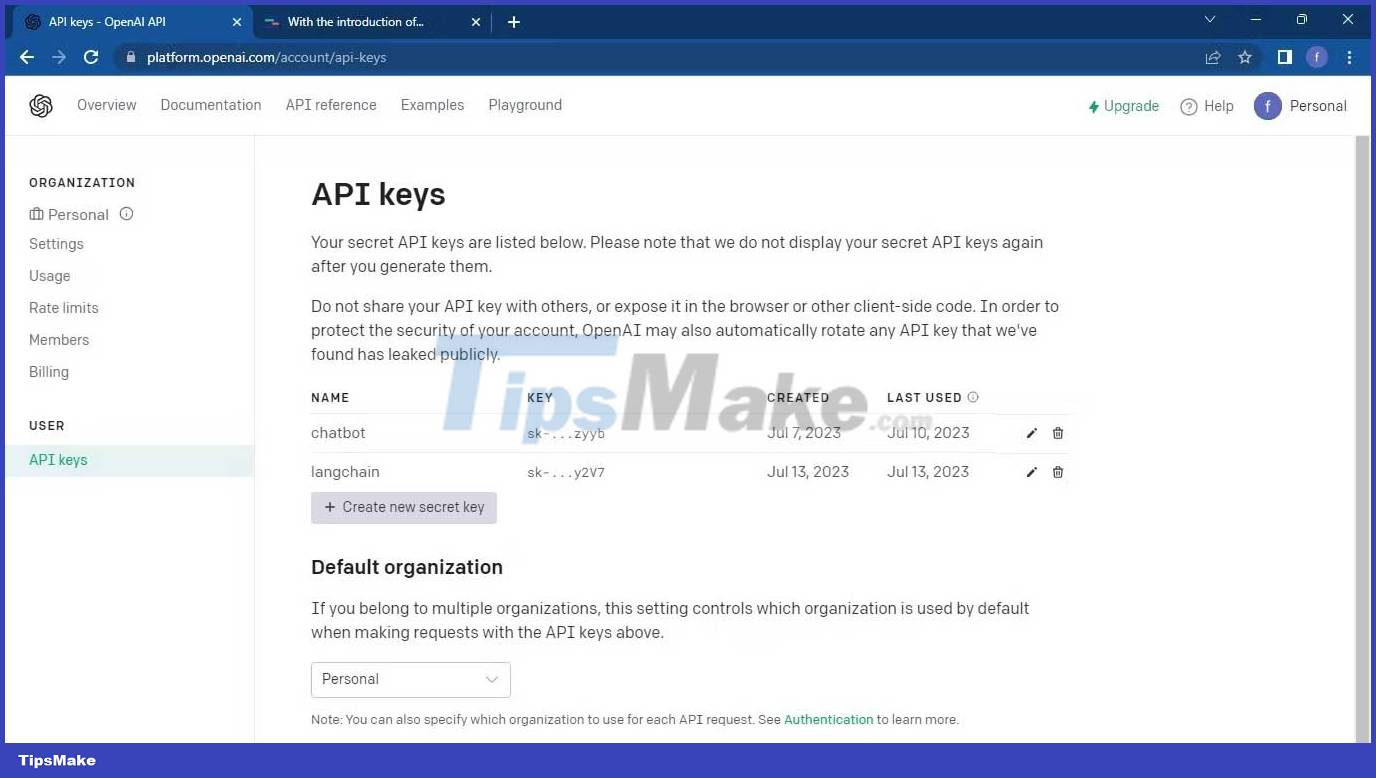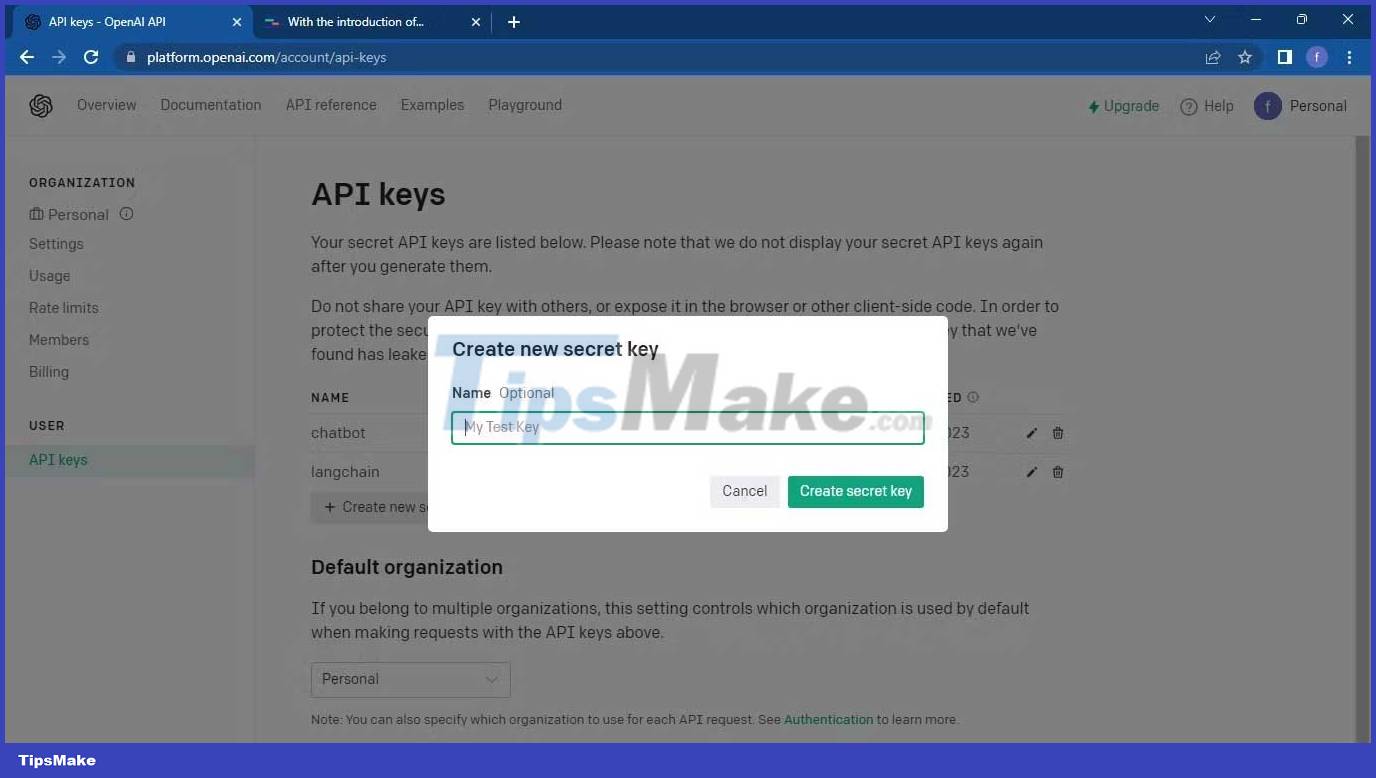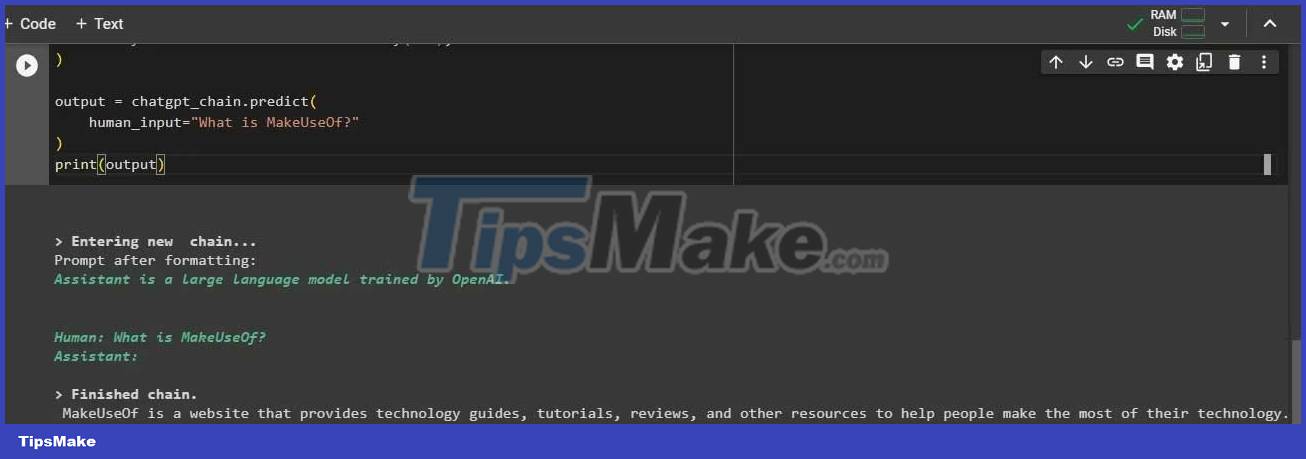What is LangChain LLM? Everything you need to know
LangChain is an open source Python framework that allows programmers to develop applications powered by major language paradigms. Its popular applications are chatbots, summaries, questions and answers…
Before diving into how LangChain works, you first need to understand what the big language model (LLM) is. It is basically a type of artificial intelligence (AI) that uses deep learning to train machine learning models on big data including text, numbers, and code.
The biggest drawback of LLM is that its models are very generic. This feature means that while it is capable of performing some tasks effectively, they can sometimes provide concise answers, to questions or prompts that require in-depth knowledge instead of answers. specifically.
LangChain's preprocessing method is an inevitable important feature as LLM becomes more powerful and uses more data. This method is mainly used in code and semantic search cases because it provides real-time collection and interaction with LLMs.
LangChain LLM User Manual
Before starting the development process, you need to set up the programming environment.
Setting up the programming environment
First, create a virtual environment and install the dependencies below:
- OpenAI : To integrate the GPT-3 API into the application.
- LangChain : To integrate LangChain into your application.
Using pip, run the command below to install the dependencies:
pipenv install langchain openaiThe above command installs the packages and creates a virtual environment.
Import installed dependencies
First, import the required classes like LLMChain , OpenAI , ConversationChain , and PromptTemplate from the langchain package .
from langchain import ConversationChain, OpenAI, PromptTemplate, LLMChain from langchain.memory import ConversationBufferWindowMemoryThe LangChain class outlines and implements language model strings.
Access OpenAI API Key
Next, get the OpenAI API key. To access OpenAI's API key, you must have an OpenAI account, then switch to the OpenAI API platform.
On the dashboard, click the Profile icon. Then, click the View API keys button .

Next, click the Create new secret key button to get the new API key.

Enter the requested name of the API key.

You will receive a secret key.

Copy and save the API key in a safe place for future use.
Application development using LangChain LLM
Now you will continue to develop a simple chat application as follows:
# Tùy biến mẫu LLM template = """Assistant is a large language model trained by OpenAI. {history} Human: {human_input} Assistant:""" prompt = PromptTemplate(input_variables=["history", "human_input"], template=template)Next, you will load the ChatGPT thread using the previously saved API key.
chatgpt_chain = LLMChain( llm=OpenAI(openai_api_key="OPENAI_API_KEY",temperature=0), prompt=prompt, verbose=True, memory=ConversationBufferWindowMemory(k=2), ) # Dự đoán một câu bằng chuỗi chatgpt output = chatgpt_chain.predict( human_input="What is MakeUseOf?" ) # Display the model's response print(output)This code loads the LLM string with OpenAI API key and prompt template. Then provide user input and show the results.

LLM is growing in popularity and changing the way humans interact with knowledge machines. Frameworks like LangChain are 'pioneers' in providing a simple and smooth way to bring LLM into applications.
Hope the article is useful to you!
You should read it
May be interested
- The secret to controlling Pokemon Go employees at work
 these days, hr managers are faced with an extremely painful problem that is the status of priority employees playing pokemon go more than work. this has caused a small impact on productivity and efficiency.
these days, hr managers are faced with an extremely painful problem that is the status of priority employees playing pokemon go more than work. this has caused a small impact on productivity and efficiency. - Check out the 'buffalo' Pokémon in Pokémon Go
 each type of pokemon has hp, cp, ability to attack and endure differently. based on these indicators, players can determine as well as choosing the most powerful pokemon for their offensive tactics.
each type of pokemon has hp, cp, ability to attack and endure differently. based on these indicators, players can determine as well as choosing the most powerful pokemon for their offensive tactics. - Sitting home can also locate Pokemon around, do you believe it?
 the tightening of the niantic developers' rules to prevent players from abusing the support tools also brings annoyance, such as those who have no conditions to move much, go away, it is hard to know. get the location of the pokemon around the area they live in
the tightening of the niantic developers' rules to prevent players from abusing the support tools also brings annoyance, such as those who have no conditions to move much, go away, it is hard to know. get the location of the pokemon around the area they live in - 5 undeniable benefits when playing Pokemon Go
 get to know many new people, breathe fresh air, relieve stress, increase concentration thanks to going out for a walk .... are compelling reasons to force you to try pokemon go now .
get to know many new people, breathe fresh air, relieve stress, increase concentration thanks to going out for a walk .... are compelling reasons to force you to try pokemon go now . - Want to earn the fastest Pokécoins in Pokémon Go? So don't miss this article!
 pokécoins in pokémon go play the role of buying items in the store. the more coins you earn, the more likely you are to buy more items. to earn pokécoins, players will have to complete certain tasks or buy real money.
pokécoins in pokémon go play the role of buying items in the store. the more coins you earn, the more likely you are to buy more items. to earn pokécoins, players will have to complete certain tasks or buy real money. - Pokémon systems when fighting in Pokémon Go
 each pokémon system in pokémon go has different strengths, along with a specific weakness. this type of pokémon will have the power to attack the other pokémon, but can defeat the other pokémon. if you know the characteristics of each type, it will be easier to choose which pokémon to battle.
each pokémon system in pokémon go has different strengths, along with a specific weakness. this type of pokémon will have the power to attack the other pokémon, but can defeat the other pokémon. if you know the characteristics of each type, it will be easier to choose which pokémon to battle. - The terms you need to know when playing Pokémon Go
 pokémon go is the most prominent name in recent days. this game of capturing and training virtual animals has created a relatively new way of playing, as players have to constantly move to catch pokémon. during the process of joining pokémon go, you will encounter and use a lot of important terms. so what do they mean?
pokémon go is the most prominent name in recent days. this game of capturing and training virtual animals has created a relatively new way of playing, as players have to constantly move to catch pokémon. during the process of joining pokémon go, you will encounter and use a lot of important terms. so what do they mean? - How to play Pokemon GO on Windows computers
 recently, pokemon go has become a popular game, attracting thousands of gamers around the world. in previous posts network administrator has guided you on how to play pokemon go on android devices and ios devices. in the article below, network administrator will guide you how to play pokemon go on windows computers using bluestacks emulator software.
recently, pokemon go has become a popular game, attracting thousands of gamers around the world. in previous posts network administrator has guided you on how to play pokemon go on android devices and ios devices. in the article below, network administrator will guide you how to play pokemon go on windows computers using bluestacks emulator software. - How to become a good Pokémon Go hunter?
 with a new way of playing, pokémon go has created a new phenomenon in the game village around the world. players will have to go around and find pokémon for themselves. so how to quickly catch pokémon and in large numbers?
with a new way of playing, pokémon go has created a new phenomenon in the game village around the world. players will have to go around and find pokémon for themselves. so how to quickly catch pokémon and in large numbers? - Things to know to upgrade Pokémon in Pokémon Go
 the whirlwind pokémon go has spread its power right on the first day of its release. everyone rushed to the street to find a pokémon for themselves. therefore, in order to become a pokémon hunter, you need to master the basics of participating in pokémon go battlefield.
the whirlwind pokémon go has spread its power right on the first day of its release. everyone rushed to the street to find a pokémon for themselves. therefore, in order to become a pokémon hunter, you need to master the basics of participating in pokémon go battlefield.










 How to detect clicks outside a React component using a custom hook
How to detect clicks outside a React component using a custom hook How to build a CRUD to-do list app and manage its state in React
How to build a CRUD to-do list app and manage its state in React How to create a Hacker News clone using React
How to create a Hacker News clone using React 7 misconceptions about open source software
7 misconceptions about open source software How to Create a CRUD App with Django's Class Based Viewers
How to Create a CRUD App with Django's Class Based Viewers